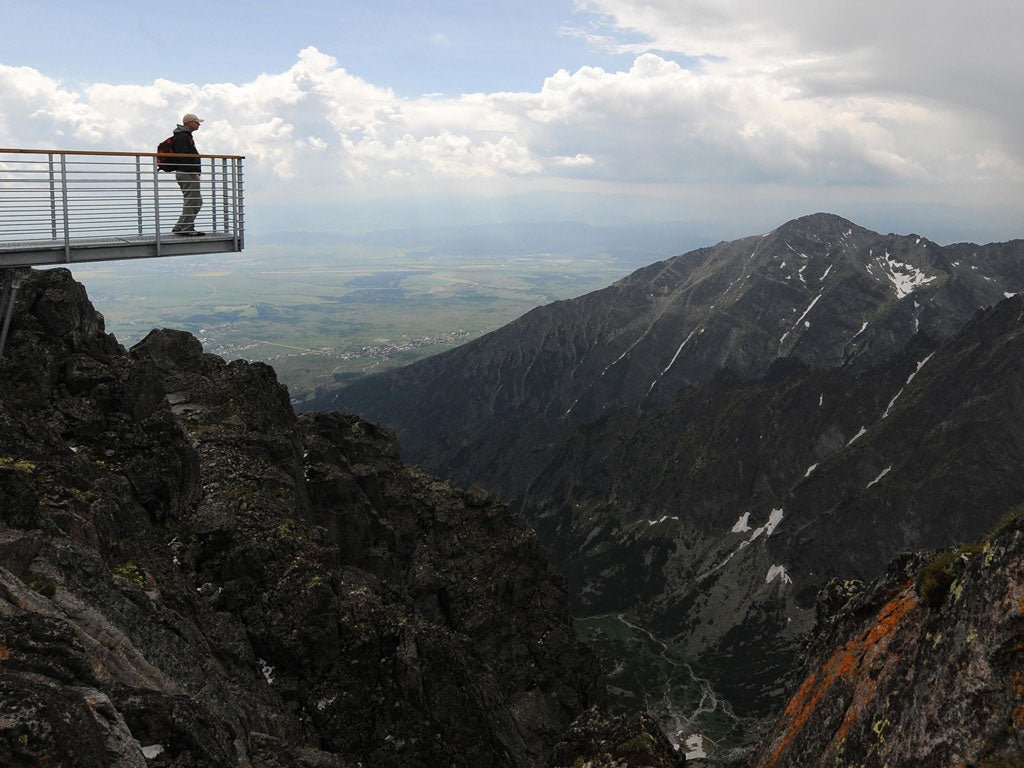Your support helps us to tell the story
From reproductive rights to climate change to Big Tech, The Independent is on the ground when the story is developing. Whether it's investigating the financials of Elon Musk's pro-Trump PAC or producing our latest documentary, 'The A Word', which shines a light on the American women fighting for reproductive rights, we know how important it is to parse out the facts from the messaging.
At such a critical moment in US history, we need reporters on the ground. Your donation allows us to keep sending journalists to speak to both sides of the story.
The Independent is trusted by Americans across the entire political spectrum. And unlike many other quality news outlets, we choose not to lock Americans out of our reporting and analysis with paywalls. We believe quality journalism should be available to everyone, paid for by those who can afford it.
Your support makes all the difference.Why go in 2013? Country of culture
Happy 20th birthday, Slovakia. Two decades on from the nation's separation from its Czech neighbour, it has been galvanised into one of the Continent's fastest-growing economies, has joined the EU and ranks right up there in Google searches for bargain ski packages and stag weekends. Signs of capitalist success? Maybe. But Slovakia's economic boom has hampered visitor numbers (it's now too pricey for many of the Eastern Europeans who once visited) and Slovakia's tourist industry is keen to distance the nation from the "cheap pistes and piss-ups" tag as well as playing down the communist past.
This overdue image overhaul is coming in time for the inevitable anniversary party in 2013. Slovakia has come a long way, but the message now is that visitors should go a lot further into it. Slovakia's ski centres are looking spruced up, but snow-sports are merely the gateway to a host of high-altitude activities in this mountainous land, such as tracking some of Europe's last major wolf populations.
Similarly, Bratislava beer-bingeing can be traded for tasting Slovak wines in villages that resound to ancient Romany or folk music. In the lower lands, Kosice shares with Marseille the title of 2013 European Capital of Culture, with a programme of film, folk and music, as well as art and craft festivals across atmospheric locations such as its castle and restored amphitheatre.
Cruising along (or staying on) the Danube is getting bigger and more luxurious. It's on the banks of this illustrious river that you'll find one of Eastern Europe's most magnificent waterside projects: the Danubiana Meulensteen art museum, undoubtedly one of the region's greatest for contemporary art. Sorry, that should be Central Europe as Slovakians prefer. "Eastern" is so Eighties.
Life-changing experiences
Strangely, for a country at the hub of Europe, Slovakia's commonly known parts are so sparse that travelling virtually anywhere is an adventure: as befits a nation more dominated by mountains or forests than almost any other on the Continent. After sampling Bratislava's medieval old town and quirky communist architecture, head for the Tatras mountains. Classic skiing at a fraction of Alpine prices awaits at resorts such as Jasna, but hiking is first class too: taking to the trails of national parks such as Poloniny with its ancient beech forests or Slovensky raj with its precarious cliff-scaling paths, is as remote as Europe gets and nigh-on primordial. Secreted here is Slovakia's greatest draw: its wonderfully preserved folk culture, the colourful roots of which are interlinked with the Romany heritage hereabouts. Roll back the centuries by stepping into one of eastern Slovakia's wooden churches or tapping into a folk festival at a scenic venue such as Vychodna.
The former Czechoslovakia was Europe's most castellated region and Slovakia's share comprises some phenomenal forts: from moody Devin overlooking the Danube to Spis, one of the Continent's largest.

Join our commenting forum
Join thought-provoking conversations, follow other Independent readers and see their replies
Comments